#daemonization
Explore tagged Tumblr posts
Text
Maycomb Blume and "Reading" Loveless in Rebirth
Heya, folks. SPOILERS ahead for Rebirth. Loveless is the only thing that should be spoiled, but I do mention foreshadowing for another event without stating the event.
Content Warning: Death is mentioned, and there is an image of a skull being held by David Tenant. This should be the only time I have to provide a David Tennant warning on this blog /s.
I've let this blog go dormant since I started it and emptied it out, but I wanted to use it. Originally, I started this blog to chronicle my readings of FF7, FF8, and FF9 as adaptations of Xiyouji, but that didn't feel like an easy thing to start with.
I did have the first section of a close reading of Loveless as it appears in English posted here, but I wanted to restart with pointing out how "reading" video games more deeply can be rewarding and is something you probably already have the tools to do if you went to primary school in the past 30 or so years. I will throw the close reading back on here when I've edited it, but I want to be doing something with this blog that isn't quite so deeply analytical to start. I also like adding images to break up text, and this is one of the few places I can do that with alt text for accessibility. Tumblr doesn't like outside links, though, so win some, lose some.
I wanna focus on Loveless from Rebirth with one critical lens among many that you can use to find your own meaning from it. You can even use weaker lenses, like the monomyth and its mother goddess guiding a hero or a Wagnerian reading, if you want. Loveless is a story about heroes on the stage set to music, even if it doesn't neatly line up with either lens. One could display how it resists interpretation by those lenses, for example. In any case,
You Probably Already Know About Literature
Loveless is a play. Even being in a game, it is a play that bears features common to European and American plays and operas from the 16th Century to the modern day. While some parts may be foreign to what you were taught in school, like the operatic portion at the beginning and the lead-solo at the end, the three-to-five act structure with exposition, rising action, climax, and falling action is something quite common to primary education in a lot of countries.
If you were taught this in primary school, you were probably also taught it through a few key authors, artists, directors, and playwrights. If you're from the US, those names likely included some people like James Baldwin, Harper Lee, Kurt Vonnegut, and maybe a few authors from South America like Julio Cortázar or Laura Esquivel. Without doubt, though, I bet you had to read Shakespeare.
That isn't without good reason. Regardless of what you think about him or his works, Shakespeare's words have been enjoyed and remade countless times around the world in many languages. His dominance of theater of a European style is to the point that some of his lines in isolation, ripped of their context, are enough to call to mind the drama on stage to much of the world.
If I say "To be or not to be..." most native English speakers are already finishing the line or jumping ahead to picture a skull in hand, dramatically lamenting a fellow of infinite jest who now has none who would mock his grin. I've seen the same happen with "Ser o no ser..." and "Sein oder Nichtsein..." in non-literary conversations.

David Tennant not mocking Yorick's grin as Hamlet. Image retrieved from Yorick on Wikipedia, originally from BBC article Bequeathed skull stars in Hamlet.
But, that aside, a piece of Loveless begins before the play, somewhat like the earlier events of Hamlet reflecting in his own play within a play.
You Probably Already Know How to Find Out More About Literature.
If you went to school in the age of the internet, you probably had to do research online to back up your writing in an essay on some piece of media you might not have cared about. Maybe you just found a website, reputable or not, that made an argument you could pull a quote from and stick in your writing. Hopefully, though, there was at least a time or two where you genuinely connected with a piece of assigned media and wanted to see what you could find from scholars about the plot, symbols, style, etc. to inform and elaborate on your own thoughts. I want to do that second one with Aerith's pseudonym for the solo at the end of Loveless, Maycomb Blume.
If you put "Maycomb Blume" into a search engine, I'm using Google through a VPN on a clean device, you're probably going to see a wall of FF7-related pages discussing the name. Unfortunately, those aren't the best sources for doing more than stimulating reflection on your own ideas. Most of them seem to come to a homophonic conclusion that it sounds like "make em bloom" that first appeared on a fan Twitter account. However, you might see an article or two about a book by Harper Lee set in the fictional town of Maycomb, Alabama - To Kill a Mockingbird.
If you look into them, you'll see that they tend to be reflecting on the resistance, or lack thereof, to oppression present in the novel by its protagonists. At first, that may seem tenuous, but let's follow the string and look into the Maycomb part of Maycomb Blume. A large piece of Final Fantasy VII is resistance or lack of resistance to oppression bringing characters together or pushing them apart, after all.
If you look up 'Maycomb' by itself, you will quickly find that it almost exclusively refers to the fictional town of Maycomb invented by Harper Lee. Google Ngram Viewer confirms this, showing virtually zero mentions of 'Maycomb' until the release of To Kill a Mockingbird. As a deliberate choice of translation, they sure did pick a unique word, no? But what about the "Blume" part? That isn't exactly an uncommon word, and it has myriad variations.
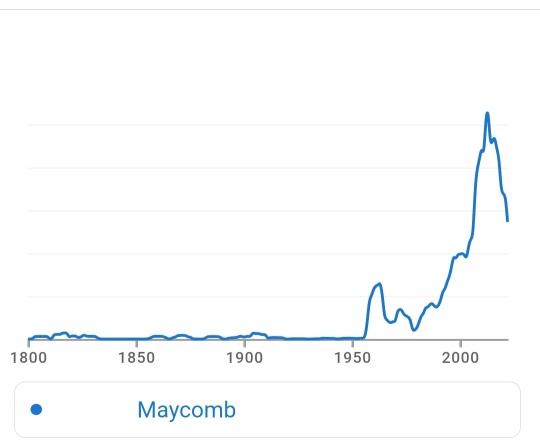
The results of a Google Ngram Viewer search for Maycomb, showing the sudden increase in the appearance of the word Maycomb in text after Lee's publication. Image screenshot from Google Ngram Viewer on October 19, 2024.
If you keep digging and do more looking, you might find that one of the most famous, influential, and controversial literary critics, Shakespeare scholars, and Harry Potter-haters in the world, Harold Bloom, was the editor for an anthology of critical essays on To Kill a Mockingbird. If you know anything about him, you might be aware of his idea that all works of literature are essentially "remakes" that carry influence from the ideas and stories they are latecomers to. This idea is what he called the anxiety of influence.
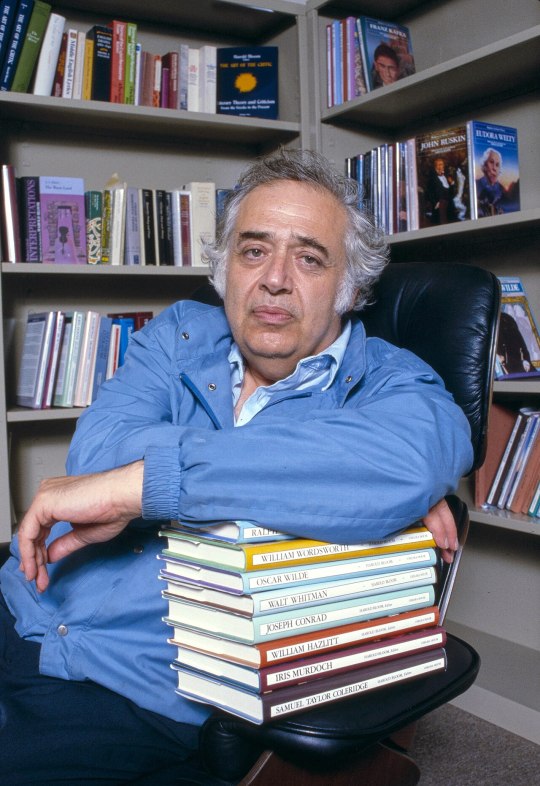
Harold Bloom, the man who hated Harry Potter before it was cool. Image retrieved from Wikipedia, by Bernard Gotfryd and originally obtained from the page Bernard Gotfryd on the Library of Congress website.
So what did Bloom have to say about Lee's most famous work in this text? Not much, as he was the editor of the volume, but he did say that the protagonists weren't what one would call heroes, but reflections of a sensibility that saw itself without the need to change in the face of racism:
The crises of [Scout’s] book confirm her in her intrinsic strength and goodness, without wounding her sensibility or modifying her view of reality.
So, where our initial look might lead us to a simple homophonic "it sounds like 'make em bloom,'" our deeper look leaves us with a lens from a scholar most focused on works of poetry on the stage, the anxiety of influence, and a theme with which to use that lens with, growth of a protagonist in the face of oppression. These tools seem appropriate for a work that is explicitly part of a "remake" of an earlier work that deals heavily with oppression, how people do or do not resist it, and what that leads them to do - so how well do they apply to Loveless?
You Probably Know How to Apply This to Loveless
Again, if you went to primary school in an English-speaking country in the past 30 years, you were probably taught the basics of how to apply critical lenses to any media you consume. If you had to read A Modest Proposal and discuss how well Jonathan Swift satirizes the plight of the poor in Ireland and upper-class reactions to it, you were being exposed to rudimentary Class or Marxist Criticism. In the US, you might have also been exposed to it while reading The Great Gatsby or The Grapes of Wrath. If you had to analyze the symbols in an Edgar Allan Poe work and explain the ideas, sensations, emotions, and images they called up for you and how well they served the work as they were written, you were being exposed to rudimentary New Criticism. In the US, you might have also been exposed to it while reading Song of Myself or listening to I Have a Dream.

Edward Manet's interpretation of the visit of the raven, both chaotic and clear. Image retrieved from The Raven on Wikipedia, originally on the Library of Congress website linked by a dead link.
The anxiety of influence, or Bloomian criticism, is just like those lenses in that it is a tool for you to apply as an individual reader. Primary schools don't often use even rudimentary Bloomian criticism, though, because it requires a knowledge of a canon, or a body of important works at its simplest, but introducing you to a canon is part of what studying literature in primary school does. Once you have at least a familiarity with a canon, you can start to identify how works influenced by that canon build upon it to deliver their own stories in a way that might or might not change how you read those original works.
Remember how I brought up the "to be or not to be..." soliloquy near the start of this? Are you minimally familiar with Hamlet, Romeo and Juliet, and King Lear?
If yes, you can apply rudimentary Bloomian criticism to Loveless.
Actually Doing It
The operatic bit of Loveless and the title itself mirror the central tragedy of King Lear: three would-be heroes vie to prove their love for King Lear and all but one are proven loveless. Even more in-line, they are a blonde would-be hero who is imprisoned (Cordelia), a would-be hero with black hair who is slain (Regan), and a would-be hero with red hair whose life is cut short (Goneril).
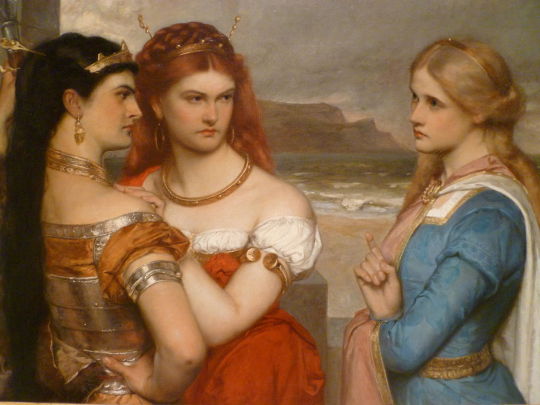
The Three daughters of King Lear by Gustav Pope. From left to right are Regan, Goneril, and Cordelia. Image retrieved from King Lear on Wikipedia.
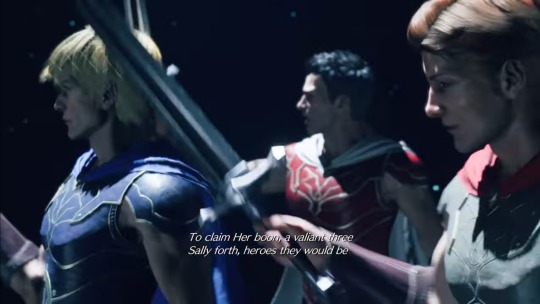
The three would-be heroes of Loveless raising their swords. Of the three, only Alphreid on the left is given explicit name, but parallels between the three and other characters within and without the Compilation may be drawn.
While there is a "mother goddess" in the mix, understanding it here without a background understanding of possible precursors (like Campbell's mother goddess or the Guanyin of Chinese/Japanese Buddhism from which he derived it, in part) would only serve to make this longer in explanation. As it goes, she is one of the primary features of the play which connect Loveless to Final Fantasy VII as a whole, but understanding the reason for her inclusion is impossible without looking at FF7 as a whole. As it stands, Loveless can be understood as a work in its own right in a similar way to how Hamlet's play can be understood as a character in the play rehearsing his own mode. That is; Loveless is informative even without understanding Remake and Rebirth in whole.
Already, though, we see that we've reached the point of tragedy of King Lear: it is not long after the imprisonment of Cordelia that she is hanged and her father dies of grief and madness. The Fool, though, appears to deliver the reveal of Bloomian clinamen, the swerving away an author (or authors) makes from the precursors when they create their own misprison (work of art/poetry/literature/etc).
Where King Lear ends shortly after Cordelia's imprisonment, Loveless only truly begins there, and the Fool, a character used to communicate the true nature of things, appears. It is fitting, then, that the character who communicates the true nature of things appears again here as the only character without change or loss in title, being the Fool in both King Lear and Loveless. He introduces us to Alphreid, who himself calls back to the madness of loveless Shakespearean tragedies with his "To proceed... or not to proceed!" line after the tutorial.

Cloud as Alphreid putting on his theater shoes and reminding the reader of the question.
Where Hamlet and Cordelia are condemned to tragedy because of their rejection of love or the rejection of their love, though, Alphreid is freed and empowered by his newfound acceptance of the Goddess' love through the hand of Rosa. This reveals the tessera of the work, the fragment that can be used with other fragments of the work to show where the author (or authors) suggest that the precursors did not go far enough. Hamlet and King Lear, then, are filled with nothing but villains and victims who refuse to embrace the power of love of all things. This makes sense, as those were tragedies.
This blends with the daemonization the work employs, a Counter-Sublime in reaction to the Sublime of the precursors. This is the evidencing of the tessera from before in the way even nature, thundering with Alphreid's rally, reveals in Loveless the counter to the Shakespearean idea that lovelessness flattens all. Where Cordelia and Ophelia die to lack of true love from even one person, Alphreid becomes empowered by love for all things. This reflects even in the reader's/player's ability to progress no matter who they declare their love for among Varvados, Garm, and Rosa, as love conquers all and lack of love flattens. Garm and Varvados, who refuse love, can be expected to fail as long as the player continues.
In hand with the application of the daemonization employed is the kenosis, the breaking device used by an author (or authors) to empty their own work and that of the precursors of their nature as literature. Here, the authors remind the reader that they are playing a game by forcing them to interact to continue Alphreid's story, breaking the illusion of the game's reality while highlighting that Hamlet and King Lear can be put on the shelf as well if you don't wish to continue. Yet, the reader does.
And, when they do, they find revealed in it the reality of the second-to-last revisionary ratio of the anxiety of influence, askesis, the movement stressing the individuality of the author (or authors). They find it most clearly in the Fool of Loveless, pleading with the audience in soliloquy where he calls upon central, humanizing lines of Shakespeare's Julius Caesar, Romeo and Juliet, and Troilus and Cresside to humanize the creators of his misprison and the misprisons embodied in its precursors,
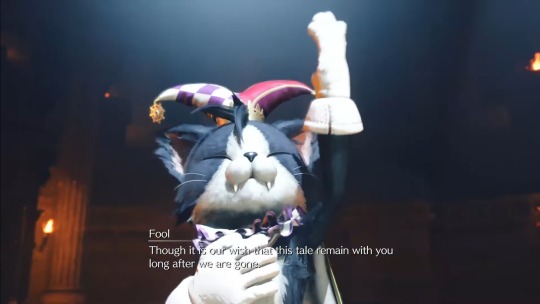
Cait Sith as the Fool doing his best to evoke pathos for the reader through allusion to the end of things.
Friends, lend me your ears. (Shakespeare, Julius Caesar) Our inspiring hero's and indomitable princess's tale draws to a close. Only one act remains. Parting is indeed such sweet sorrow. (Shakespeare, Romeo and Juliet) But as they say, all good things must come to an end. (Chaucer/Shakespeare, Trolius and Criseyde/Troilus and Cressida) Though it is our wish that this tale remain with you long after we are gone.
Emphasis and parenthetical additions mine.
Almost in those words, the Fool draws the reader of both King Lear and Loveless to consider the work as its own unique and novel expression; though, the Fool of King Lear simply tasks the reader with recognizing the application of Lear's lessons. The Fool of Loveless, however, calls on the reader to keep the work as a novel piece with them even as they finish the work.
Even more, it seems to remind the reader that an end in death is soon to come, for Mark Antony was lamenting the death of Caesar in his "Friends, Romans, countrymen, lend me your ears..." speech, Juliet was foreshadowing in a good night that her cherishing might kill Romeo when she described parting as sorrow and grief, and Chaucer was describing the parting of Criseyde despite the pleas of Troilus when he said, "every thing hath ende" (which Shakespeare later modified). For all of these works, the Fool seems to be showing the ways in which this story will show an end isn't quite so simple - that a death isn't so simple as ending everything for those who survive.
The last of the revisionary ratios of the anxiety of influence, the opening of the work near the end of the author's (or authors') life that reveals the precursors' influence which is apohprades, is evident across the work in the blatant allusions we just discussed and in the name of the trilogy of works that contains it: Remake.

Cloud putting on his standoffish act as Alfred. The translation has served to better the depth, as even Alphreid is the portmanteau of Siegfried and Alberich from The Ring Cycle, highlighting Cloud's dualism.
As the creators of the 1997 release age and face death's tyranny, the anxiety of influence begets renewed misprison that causes the authors to reveal the precursors to their work with their reactions to them. Isolated to just Loveless, a reader can see a return of Shakespeare into a work that originally copied the format he used without clearly showing his presence to reveal a new reading of his most prominent tragedies. This reading, even, mirrors that of Bloom's reading of To Kill a Mockingbird: the tragedies of Shakespeare were preventable or survivable for more of the characters with the same force that could have prevented the crisis of To Kill a Mockingbird.
Why Does This Matter?
Because the curtains don't have to be blue if they mean something to you or the person that made them, and finding meaning in even just a small part of a work can reveal meaning to you in the whole and in other things you enjoy. If we can see Loveless as a take on growth through love of all things and people in the face of oppression influenced by a myriad precursors through baby's first Bloomian lens, we can do that with the Remake trilogy as a whole, even before it is completed. That, even, is just one critical lens that can be used. Jacob Geller has a critique of Midgar as presented in Remake through the lens of architecture and an Akira Kurosawa film that leans towards Class/Marxist Criticism, for example.
I know this was long, but I am rather determined to help people understand that the literacy skills and canons their teachers tried to impart on them are useful outside of reading those same canonical works. Final Fantasy VII suffers from surface-level readings (as opposed to something like Silent Hill or Outer Wilds), but we don't have to read any work like that, especially if we can evidence more deep readings with the text.
So, thanks if you read this far; though, you probably didn't need me to tell you about this stuff if you did.
If you're interested in the Xiyouji thing, it isn't my bigger project, but I'm gonna be semi-regularly posting readings of characters, locations, fiends, concepts, and events as seen in Remake and Rebirth through the lens of adapting Xiyouji. I'll probably be posting Barret Wallace as Sandy first, but it is a tossup between Red XIII as Red Boy, the Trio as the Three from Gensomaden Saiyuki, or The Crow's Nest's Colin as the Crow's Nest Zen Master after that. I wanted to start with this to demonstrate the idea in a smaller part and remind people why they were taught media literacy in school, though. The The Norse Myths That Inspired Final Fantasy VII guy, M.J. Gallagher, seems to be trying to do that in a way, too, but he went a different direction from Dragon Quest and the king of Xiyouji adaptations that come from Japan who helped make it - Akira Toriyama, the creator of Dragon Ball.
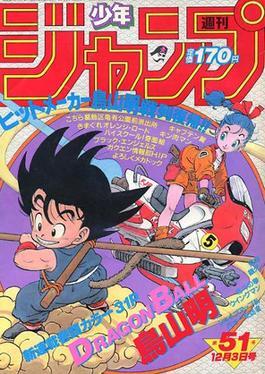
The first appearance of Goku by Akira Toriyama also beginning his journey as an adapted Monkey on a cloud towards becoming the Buddha Victorious in Strife. Image retrieved from Goku on Wikipedia.
#ff7#ffvii rebirth#ff7 loveless#ffvii remake#final fantasy 7#cloud ff7#ffvii#loveless#shakespeare#final fantasy rebirth#final fantasy vii rebirth#final fantasy vii#cloud strife#video game analysis#bloomian#harold bloom#literary criticism#new historicism#the anxiety of influence#bloomian critique#kenosis#askesis#apophrades#tessera#clinamen#daemonization#revisionary ratios#six revisionary ratios
3 notes
·
View notes
Text
When the pile of clothes on the chair in the corner starts looking suspiciously person-shaped in the dark:
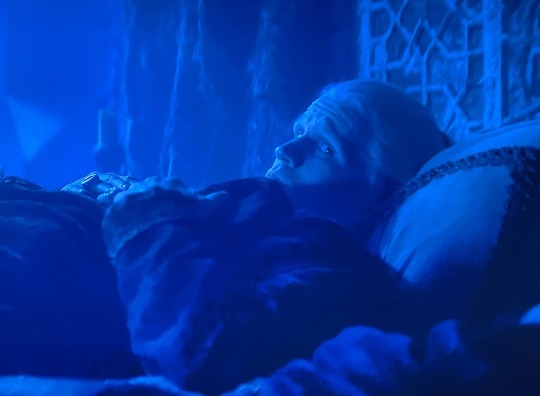
17K notes
·
View notes
Text
born to marry him, forced to read fanfics about him
#house of the dragon#house targaryen#house stark#sandor the hound clegane#cregan stark#aegon ii targaryen#aemond targaryen#daemon targaryen#harwin strong#jon snow#robb stark#spencer reid#steve harrington#eddie munson#billy hargrove#stranger things#harry potter#draco malfoy
21K notes
·
View notes
Text
“he’s so babygirl”
babe he just killed somebody.
#aemond targaryen x reader#rafe cameron x reader#jason todd x reader#ethan landry x reader#daemon targaryen x reader#joel miller x reader#rick grimes x reader#jon snow x reader#robb stark x reader#joe goldberg x reader#loki laufeyson x reader#bucky barns x reader#anakin skywalker x reader
12K notes
·
View notes
Text

"She who, without asking, understood it all and still came to her fate."
Helaena Targaryen trapped in prophecy
Updated and fixed version on Insta
Also posted on Twitter/X
#helaena targaryen#house of the dragon#hotd#rhaenyra targaryen#daemon targeryan#aemond targaryen#aegon targaryen#alicent hightower#hotd fanart#my art
21K notes
·
View notes
Text
I feel like a virgin when I search up “x Reader” with a new character I like
#leon kennedy x reader#gojo satoru smut#getou suguru x reader#eren jeager x reader#choso smut#rafe cameron x reader#coriolanus x reader#sukuna x Reader#yandere#daemon x reader#aemond x reader#jean x reader#armin x reader smut#rick grimes x reader#theodore nott x reader#dick grayson smut#op smut#zoro x reader#kid x reader#doflamingo x reader#jujutsu kaisen smut#snk smut#weird girl
16K notes
·
View notes
Text





Dreams didn't make us kings. DRAGONS did.
#house of the dragon#hotdedit#gameofthronedaily#rhaenys targaryen#daenerys targaryen#rhaenyra targaryen#daemon targaryen#aegon ii targaryen#meleys#caraxes#rhaegal#sunfyre#syrax#game of thrones#gotedit#gifs#*#hotd spoilers
22K notes
·
View notes
Text
“that character is a war criminal” that character is from a fictional fantasy world and did not attend the geneva convention
#this is my favorite tweet i ever made#fictional villains#the darkling#aleksander morovoza#anakin skywalker#halbrand#daemon targaryen#daenerys targeryan#house targaryen#rhysand#kylo ren#ben solo#jess speaks
90K notes
·
View notes
Text
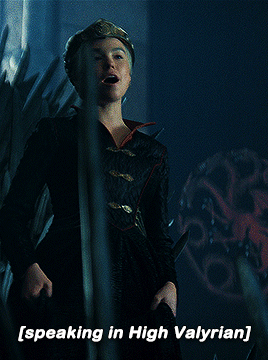
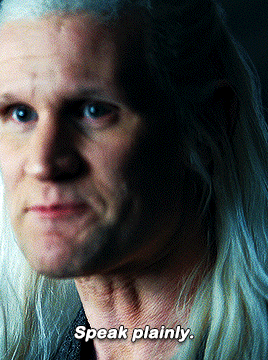
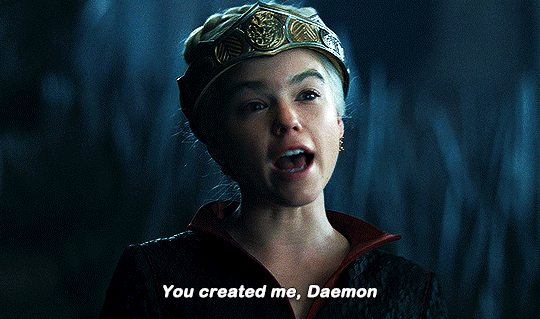


DAEMON & RHAENYRA TARGARYEN HOUSE OF THE DRAGON: 2x04
#odd ugly shaped gifset lmao....i was gagged tho#house of the dragon#hotd spoilers#hotdedit#hotd s2#daemon targaryen#rhaenyra targaryen#gotedit#hotd#2605#usersuzie#userhella#usermal#usermali#tuseralicia#usersili#userines#userzil#MILLY!!!!#gameofthronesdaily
10K notes
·
View notes
Text
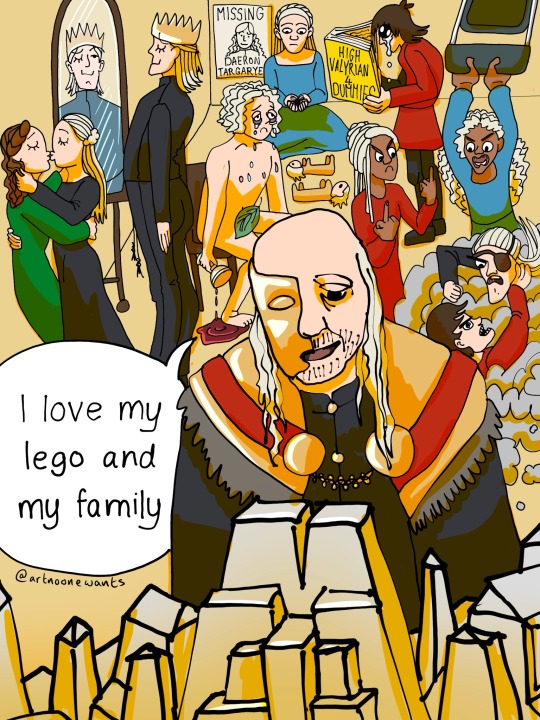
Poor delusional Viserys 😔
#hotd#viserys targaryen#king viserys#harry lloyd#house of the dragon#asoiaf#fire and blood#rhaenyra targaryen#alicent hightower#emma darcy#olivia cooke#rhaenyra x alicent#rhaenicent#daemon targeryan#matt smith#aegon ii targaryen#tom glynn carney#helaena targaryen#phia saban#jacaerys velaryon#harry collett#baela targaryen#bethany antonia#rhaena targaryen#phoebe campbell#aemond targaryen#ewan mitchell#lucerys velaryon#elliot grihault#daeron targaryen
14K notes
·
View notes
Text





HOUSE OF THE DRAGON S02E03 | dir. Geeta Vasant Patel
#hotdedit#house of the dragon#hotd#rhaenyra targaryen#rhaenyratargaryenedit#mine#usermal#userjulia#usermali#useriselin#tusereliza#userzaynab#userelenagilbert#userdesirae#dixonscarol#hvitserkk#hotd spoilers#gif#daemyra#daemon targaryen#daemontargaryenedit#matt smith#milly alcock#malcockedit
9K notes
·
View notes
Text

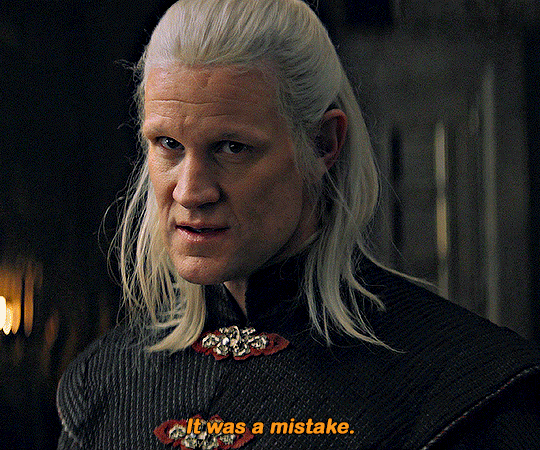
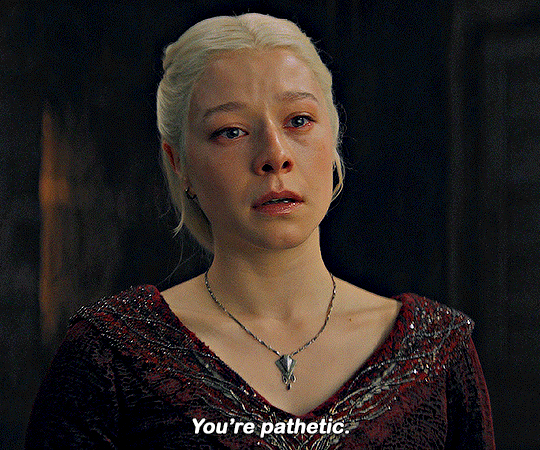
HOUSE OF THE DRAGON 02.02

#house of the dragon#hotd#hotdedit#rhaenyra targaryen#daemon targaryen#tvedit#dailyflicks#userjulia#usereme#usermali#usermal#userdesirae#userelenagilbert#userzaynab#usergal#useraurore#tuseralicia#usersili#*mygifs#hotd spoilers
10K notes
·
View notes
Text
rhaenyra: why on earth are they blaming me? WHO would do such a thing?
daemon, guilty asf right next to her:

rhaenys knowing it was his ass instantly:

#my girl was truly the only one that had faith in him#house of the dragon#hotd#rhaneyra targaryen#daemon targaryen#rhaenys targaryen#hotd spoilers
9K notes
·
View notes
Text
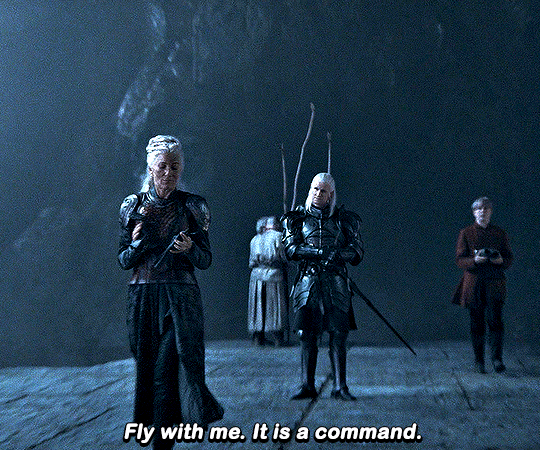

HOUSE OF THE DRAGON SEASON TWO Episode 1: A Son for a Son
#hotd spoilers#house of the dragon#hotdedit#gotedit#cinematv#daemon targaryen#dailyhotdgifs#gameofthronedaily#rhaenys velaryon#2020s#drama#action#*#by ines#userzaynab#useraurore#userpayton#userlolo#tuserbailey#tuserlou#usersavana#usersaoirse#userzo#userchristineb#jokerous#tuserhan
10K notes
·
View notes
Text
“i can fix her, i can fix him, i can fix them”
i think we need to work on you first.
#aemond targaryen x reader#aegon targaryen x reader#jon snow x reader#robb stark x reader#rafe cameron x reader#mattheo riddle x reader#theodore nott x reader#loki laufeyson#bucky barns x reader#rhaenyra targaryen x reader#anakin skywalker x reader#joel miller x reader#ellie willams x reader#jason todd x reader#yelena belova x reader#kate bishop x reader#jj mayback x reader#daemon targaryen x reader#ethan landry x reader#wanda maximoff x reader#matt murdock x reader#luke castellan x reader#simon riley x reader#konig x reader#daenerys targaryen x reader#coriolanus snow x reader
6K notes
·
View notes